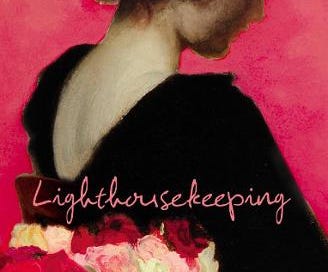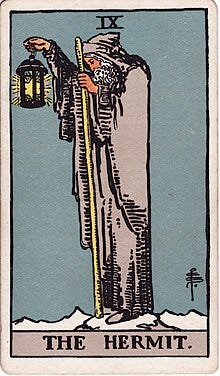Symbols of light
I’ve just finished reading Jeanette Winterson’s exquisite fable ‘Lighthousekeeping’. I won’t reveal the story, but the symbol of the lighthouse, sending its illumination to the worthy and unworthy alike, really resonated with me this week. Jeanette weaves the theme of the importance of stories for our sense of belonging and identity throughout this lovely tale. She draws together threads as diverse as The Tower of Babel, Darwin and Dr Jekyll in a story written in unflashy and beautiful language. Read it.
Lighthouses … I am consciously noticing every instance of illumination at the moment. Like many people who are not supporters of MAGA, I have been outraged by comments from Donald Trump in the past few days. It’s hard to retain belief in decency, compassion, respect for truth and justice when the leader of the USA is so easily manipulated into repeating the lies spread by Putin’s propaganda machine. It can feel as if the world as we knew it is toppling around our ears.
Another reminder of the Tower of Babel. I just went back to Genesis 11 to check the story, and was surprised to find that I had invented the element of God sending the tower tumbling. The Biblical account simply states:
God said … “Come, let us go down and confuse their language so they will not understand each other.”
So the Lord scattered them from there over all the earth, and they stopped building the city. That is why it was called Babel — because there the Lord confused the language of the whole world.
There certainly seems to be a lot of babbling going on at the moment. But this sense of our known world collapsing is reaching my ears from many different people. The very astute Jonn Elledge points out that Western Europe’s belief that America will always come to our rescue is comparatively recent, and that war has been the ‘normal state’ of much of human history.
So, although we might not be in the era of ‘the collapse of civilisation as we know it’, I have been banging on to anyone who will listen about how important it is that we pay attention to those who do shine a light in the darkness. And that got me musing on the symbolism of ‘light’.
The lighthouse serves to warn sailors of hidden dangers. Beacons were lit in Elizabethan times to warn of the Spanish fleet approaching. We’re less likely to stub our toes at night if there’s some background illumination on the way to the loo. So light helps us avoid hazards.
‘Seeing the light’ is used to mean that a previously unknown truth has become clear to us. Often with a spiritual or mystical element, as in the scales falling from Saul’s eyes (Acts 9:18). Those more drawn to Buddhist/Taoist ideas are seeking ‘enlightenment’: freedom from illusion. Is it ironic to state that in scientific terms, everything we see is ‘the light’: what enters our eyes is light reflected from objects?
The element of light that we value is its ability to ‘banish the darkness’. One of my favourite Mullah Nasrudin stories is of the sage searching for his lost key under a streetlight. A neighbour joins the search without success and asks Nasrudin where he lost the key. ‘Inside my house’ replies Nasrudin.

‘So why are you searching here?’ the neighbour asks.
‘Because the light is better here’ replies Nasrudin.
What’s the moral of this Sufi fable? That we look for answers where there is light (i.e. where the search is easy)? That mystics can be paradoxical? That what we seek is not easily found?
I referred last week to the Tarot image of The Hermit. This image is one of the Major Arcana cards in the Rider-Waite-Smith Tarot deck. A.E. Waite, who created this deck in 1910, described the Hermit card as representing “Prudence, circumspection; also and especially treason, dissimulation, roguery, corruption.“
I’ve always preferred Eden Gray’s reading that The Hermit carries the lantern of truth, to guide other seekers of the light.
(I don’t believe the Tarot deck is a mystic secret handed down the centuries. It’s a created set of images, redolent with symbolism that taps into human myths and beliefs.)
But these two different readings show how easily we can each choose our own meaning – in this case from an esoteric card, whose pictorial symbolism is open to many interpretations. Out there - in the world of bully leaders and distortions of truth - so many different meanings are created.
We tend to equate ‘light’ with ‘true’ and ‘good’, and mostly, I agree with this. Biblical figures are often shown with halos to represent their sanctity. But ‘truth’ often has layers – what we have learned to call ‘nuance’ – and darkness has its own truths, too. We need the Moon as well as the Sun, though its light is only reflected sunlight.
In psychological terms, we need to accept our ‘Shadow’ as much as our smiling daytime ‘Persona’. https://www.thesap.org.uk/articles-on-jungian-psychology-2/about-analysis-and-therapy/the-shadow/
I will continue to try and bring light, to illuminate some things that are not obvious on the surface – this is my response to those who seem to act from the position that ‘might equals right’.







Synchronicity! Been having a backstage discussion past week with a friend on here about the problem that so much analysis or commentary works in enlightenment rationality style of argument and presentation. And how we need to be more subtle. We've also been discussing how challenging but necessary to acknowledge that nothing human is alien to us - we don't stand across a chasm from those who pillage and oppress. I said I'd like to see humour, allegory, and stories like those of *Mullah Nasrudin* used more as we feel-think our way through this moment. This evening, an unexpected phone voice message message - from an old friend who is a Muslim sufi. And then this post from you. I feel comforted in turbulent times. May wisdom break through for us all. We're listening.
Smiling.